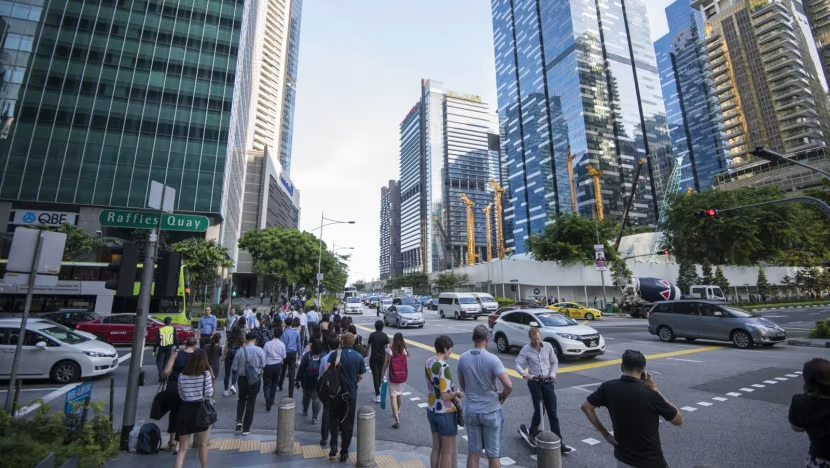Growth of 1 per cent to 3 per cent was forecast previously.

SINGAPORE: Singapore has narrowed its gross domestic product (GDP) growth forecast for 2024 to 2 per cent to 3 per cent, the Ministry of Trade and Industry (MTI) said on Tuesday (Aug 13), following a better than expected performance in the first half of the year.
The forecast previously stood at 1 per cent to 3 per cent, and Singapore’s GDP growth averaged 3 per cent for the first six months of the year when compared with the previous year.
MTI said the Singapore economy expanded by 2.9 per cent in the second quarter, in line with its advance estimates released last month, and slightly lower than the 3 per cent recorded in the first quarter. Economists in a Reuters poll forecast growth of 2.7 per cent for the second quarter.
Growth in the second quarter was driven primarily by the wholesale trade, finance and insurance, and information and communication sectors, MTI said.
The manufacturing sector shrank, largely due to a contraction in the biomedical manufacturing cluster, where there was a sharp fall in pharmaceuticals output. That offset the growth in the electronics cluster, which was supported by strong demand for smartphone, PC and artificial intelligence-related chips.
Consumer-facing sectors such as retail trade and food and beverage services shrank, in part because of increased outbound travel by locals.
On a quarter-on-quarter seasonally adjusted basis, the economy grew by 0.4 per cent, in line with the 0.4 per cent expansion in the first quarter.
OUTLOOK FOR 2024
The economic growth figures of Singapore’s major trading partners have mostly been in line with expectations since the Economic Survey of Singapore in May, MTI said.
The economies of the United States and Malaysia performed better than expected in the second quarter, boosted by strong domestic demand. On the other hand, growth in Japan was weighed down by weak private consumption as real wages continued to decline.
Looking ahead, US economic growth is expected to ease, with consumption growth slowing as the labour market weakens.
The Eurozone’s GDP growth is likely to improve gradually, and China’s economy is projected to expand, though at a slower pace in the second half of the year.
“On balance, Singapore’s external demand outlook is expected to be resilient for the rest of the year,” MTI said. However, the ministry flagged two downside risks that could have an impact on the global economy.
“First, an intensification of geopolitical and trade conflicts could dampen business sentiments and add to production costs, which could weigh on global trade and growth,” it said.
“Second, disruptions to the global disinflation process could lead to tighter financial conditions for longer, and trigger market volatility or latent vulnerabilities in banking and financial systems.”